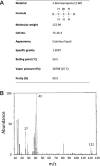Carcinogenicity and testicular toxicity of 2-bromopropane in a 26-week inhalation study using the rasH2 mouse model
- PMID: 36721063
- PMCID: PMC9889353
- DOI: 10.1038/s41598-023-28825-4
Carcinogenicity and testicular toxicity of 2-bromopropane in a 26-week inhalation study using the rasH2 mouse model
Abstract
2-Bromopropane (2-BP) is a colorless liquid at room temperature and is used in closed systems in factories, mainly as an intermediate for medicines, pesticides, and other chemicals. However, the carcinogenicity of 2-BP is still unknown. The CByB6F1-Tg(HRAS)2Jic (rasH2) transgenic mouse model has been established as an alternative to long-term studies (1.5 years-lifetime) to detect carcinogenicity in as short a time as six months. We performed a 26-week inhalation exposure study of 2-BP using the rasH2 mouse model. Male and female rasH2 mice were exposed to 0, 67, 200, or 600 ppm of 2-BP for 6 h/day, 5 days/week for 26 weeks. All tissues and blood were collected and subjected to biological and histopathological analyses. The results showed a concentration-dependent increase in lung tumor development in male and female rasH2 mice exposed by inhalation to 2-BP, which was significant by Peto's and Poly-3 trend tests. Furthermore, in male rasH2 mice, 2-BP was found to be a testicular toxin. This study is the first to demonstrate that 2-BP is carcinogenic in male and female mice and a testicular toxin in male mice using the rasH2 mouse model.
© 2023. The Author(s).
Conflict of interest statement
The authors declare no competing interests.
Figures







References
-
- Environment, U. N. About Montreal Protocol. Ozonactionhttp://www.unep.org/ozonaction/who-we-are/about-montreal-protocol (2018).
-
- Kim Y, et al. Hematopoietic and reproductive hazards of Korean electronic workers exposed to solvents containing 2-bromopropane. Scand. J. Work Environ. Health. 1996;22:387–391. - PubMed
-
- Park J-S, et al. An outbreak of hematopoietic and reproductive disorders due to solvents containing 2-bromopropane in an electronic factory, South Korea: epidemiological survey. J. Occup. Health. 1997;39:138–143.
-
- Lim CH, et al. Effects of 2-bromopropane on the female reproductive function in Sprague-Dawley rats. Ind. Health. 1997;35:278–284. - PubMed
-
- Ichihara G, et al. Testicular and hematopoietic toxicity of 2-bromopropane, a substitute for ozone layer-depleting chlorofluorocarbons. J. Occup. Health. 1997;39:57–63.
Publication types
MeSH terms
Substances
LinkOut - more resources
Full Text Sources
Molecular Biology Databases
Research Materials
Miscellaneous

